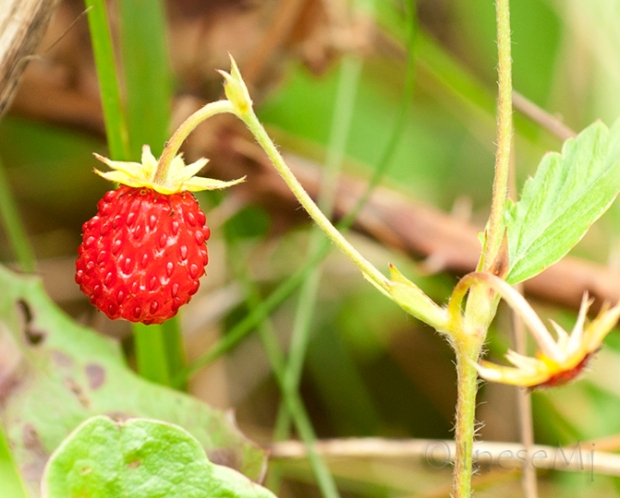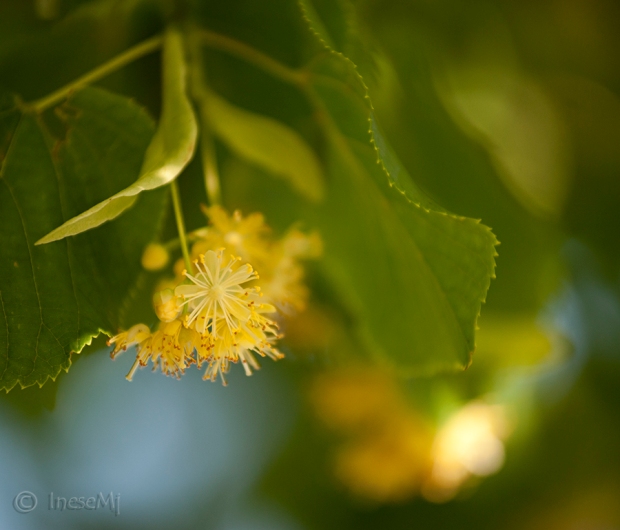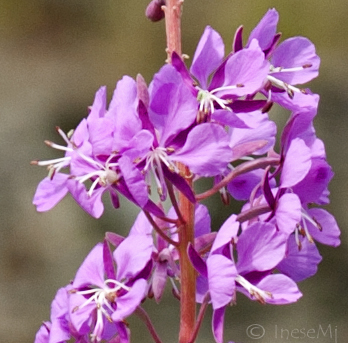The origins of herbal medicine are the origins of civilization itself. Only imagine that all these herbs were known and used thousands year ago: for healing, food, drinks; to eliminate bad odors; for making soap and body scrub; to dye clothing and even hair. There is no plant, no part of a plant that could not be used one way or another. If you are interested in growing some herbs in your back yard, you can check out this link for the UK and this link for the USA. These two companies are selling seeds and gums of the wild herbs online. I just found them in Google. I used to buy seeds of wild plants back in the 80-s, and from that experience I know that you will get literally a few seeds in that paper bag, but don’t panic, it will be enough to start your herb garden. You can also buy a mix and turn your lawn into a meadow 🙂
Wild rose (Rosa canina )
These are the fruit of the Wild rose plant – rose hips. You can dry rose hips or soak them in honey for a couple of weeks. Remove all the seeds and itchy hairs from inside the rose hip before you use them. You can also soak a whole flower in honey, or only the petals. Fill up a jar and then gradually add honey until the jar is full. This honey tastes great on your toast, and gives you a whole load of vitamin C, healthy flavonoids and cancer-fighting compounds. You can also use rose petals on you toast, salad or in your desert – all up to your imagination.
Wild roses have five petals. The five-pointed star is a pentagram, a pentacle, which is a symbol of magic. Roses also have a secret hidden behind the flower. Literally. I will share this secret with you.
This is my drawing, sorry it is not perfect, but it is good enough to show you something. If you look at the back of a rose flower you see the set of five leaf-like sepals (they enclose the flower in the bud stage). Look at them carefully – two sepals have outgrowth on both sides; two show no sepal outgrowth, and one has it only on one side! Some of the roses have more prominent outgrowth, some less prominent, but all roses do it 🙂
When I was young I read a riddle about the rose sepals in a very old book. I googled it and found this page! For those who have no time to check out the link here is the riddle I remember:
Of the five brothers at the same time born Two from our birthday ever beards have worn On other two none ever has appeared While the fifth brother wears but half a beard.You can show the sepals and read the riddle to your kids:)
Wild strawberry (Fragaria vesca)
Wild strawberry is a close relative of the wild rose and it has also been used over the centuries. It would take me a page to list all the phyto-chemicals and microelements found in the fruit, leaves and root of Wild strawberry. It has anti-inflammatory and diuretic properties and can be used to treat diarrhea, kidney and bladder problems; it also reduces risk of cardio-vascular diseases. In-vitro studies have shown that certain chemicals found in strawberries reduce cell proliferation of breast cancer and colon cancer cells. You can consume as much berries as you like, and add the leaves to your regular herbal tea mix. All the above also applies to the cultivated strawberry fruit.
Lime (Linden) blossom (Tilia europea)
Linden is a tree. Its flowers, leaves and wood are used for medical purposes. Linden leaf and blossom are used to treat cold, sore throat, nasal congestion, bronchitis, fever, high blood pressure, insomnia. It is the best herbal tea you can use when you get a virus infection: it induces sweating and all the toxins get washed out of your body. You can put 1-2 Lime blossoms in your regular herbal tea mix every evening just because it smells and tastes so nice 🙂
St John’s wort (Hypericum perforatum )
Actually all species of Hypericum can be used in herbal medicine. To pick up some plants for your tea you don’t have to pedantically look for those perforated leaves.
St John’s wort is one of the most favored herbs. Ancient herbalists used it internally and externally to treat sciatica, deep wounds and bruises. Internally it is used for any inflammation and ulceration: in kidneys, liver, bowels, uterus. There is good evidence that St John’s wort may reduce symptoms in people with mild to moderate depression acting like Selective serotonin re-uptake inhibitors. Of course it can not be used if a patient is already on antidepressants.
St John’s wort helps people with Seasonal affective disorder ( SAD) and reduces anxiety during menopause. For a generally healthy person a small bit of St John’s wort flowers added to your afternoon herbal tea cup will improve your mood and clean your system, and give your tea that beautiful ruby color.
Here is a poem describing another use of the plant 🙂
St. John’s wort doth charm all the witches away.
If gathered at midnight on the saint’s holy day.
And devils and witches have no power to harm
Those that do gather the plant for a charm:
Rub the lintels and post with that red juicy flower
No thunder nor tempest will then have the power
To hurt or to hinder your houses: and bind
Round your neck a charm of a similar kind.
Fireweed/ Rosebay Willowherb (Epilobium angustifolium)
Fireweed tea has antispasmodic and demulcent properties. It is used to treat kidney, urinary tract and prostate disorders, and also whooping cough and asthma. Young shoots are good in salads and also steamed as a substitute for asparagus. Fermented leaves of Firewood are known as Kapor tea, but even simply dried leaves make a great tea, soothing and healing.
Lady’s bedstraw (Galium verum)
This plant is for centuries used in herbal medicine to treat skin problems, and also to detoxify liver, kidneys, pancreas, lymph and blood. It can be used for foot care. Place this herb in hot water and when the temperature is comfortable soak your feet. The name of the plant indicates that it can be used as an aromatic stuffing for pillows and mattresses. It also has insect repellent properties. Roasted seeds of Lady’s bedstraw can be used as a coffee substitute, and its green parts as an addition to salads. The plant is used as a curdling and coloring agent in cheese making. A red dye is extracted from the roots and a yellow dye from the flowers of Lady bedstraw plants. You can try to color your hair blond as did the ladies in the 15th century England and Ireland.
Common figwort (Scrophularia nodosa)
Figwort is a powerful medicine plant, and I don’t use it in my tea. It just looked nice in my viewfinder so I took a picture 🙂 It has anti-inflammatory, diuretic and cardiac stimulant properties. Figwort’s Latin name speaks for itself: it is used whenever enlarged glands and tumors are present.
Thank you for reading! Hope these two blog posts and links were useful, and at least one herb will find its way to your cup of tea!
Photography tip of the day: Check your images after every 2-3 shots. The light is changing and you don’t want your images over- or underexposed, especially your portraits.












Gorgeous post, and insightful. 🙂
Thank you for reading! Hope you pick up some herbs for your cup of tea this summer 🙂
The first photo took my breath away, the last is sublime. Thanks for the seed link.
Oh thank you! And glad you are going to buy a few seeds:)
Reblogged this on Smorgasbord – Variety is the spice of life and commented:
Part two of a great post on herbal medicines and teas. Very interesting and delightfully illustrated. inesemjphotography.
Thank you so much for re-blogging! Have a good weekend!
Hi dear Inese.
Part II is as awesome as part I…
I will definitely like to take the Wild strawberry tea!.
Hope all is going well over there.
Thanks for sharing and best wishes to you and yours,
Aquileana 😀
Thank you for visiting and reading! Hope your tea tastes fabulous!:)
My best wishes,
Inese
You are welcome. It is always my pleasure.
By the way, I have nominated you for an award. Check out the nomination on my last post.
Hugs, Aquileana 😀
Aquileana, thank you so much, you are spoiling me 🙂 I really appreciate your kindness and feel so humbled! Will check out in a minute!:)
Thank you again!
My pleasure, as always, dear inese.
Hugs, Aquileana 😀
Great images and knowledge Inese, there’s a little pagan in you, I think?
Andrea – I used to work with students. To keep them focused one has to make the lessons fun, exciting and with a touch of magic 😉
Gorgeous!
Thank you:) A cup of herbal tea is not only a pleasure but a philosophy
Wonderful detailed knowledge, i’m learning a lot here and enjoying it
My best to you
john
So glad you find it useful! Sometimes it takes little to make big changes. One cup of herbal tea a day can make a difference.
Hope you have a nice week.
Inese
Thank you for these two posts on herbs – I enjoyed them a lot. Your photos are gorgeous!
So glad you like them, and hope you find the info useful and entertaining:)